A Robin's Tale
Posted on: 21 December 2022 by Kim Fisher, VG&M Visitor Services in 2022
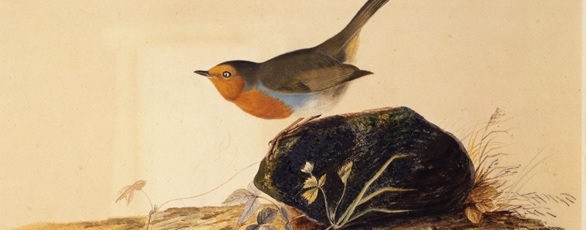
Wednesday 21st December 2022 is Winter Solstice and National Robin Day and so we take a closer look at some of the Robin paintings in our Audubon gallery and the stories attached to them.
John James Audubon
John James Audubon (1785-1851) was a nineteenth-century wildlife artist and naturalist. He travelled the American wilderness identifying, studying and drawing hundreds of species of birds and mammals.
Audubon’s main passion was hunting and drawing in the American wilderness. Our important collection of his work comes from the Rathbone Family who were introduced to Audubon in 1826 and the family have had strong links with the University since 1882.
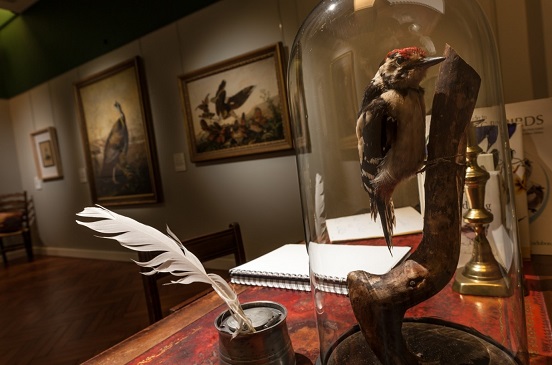
Gallery 8, Victoria Gallery & Museum
Audubon in Liverpool
Audubon was introduced to prominent Liverpool merchant Richard Rathbone and on 25 July 1826 Audubon dined with the family at Greenbank House and stayed with them for a few weeks.
The paintings on display in the VG&M were given by Audubon as gifts to members of the Rathbone family and some of them bear inscriptions or poems written by him.
Audubon was introduced to Richard Rathbone’s 35-year-old sister Miss Hannah Mary Rathbone. Although he was married, there is the suggestion that his feelings towards Hannah were more than that of mere friendship. His journal was addressed to his wife Lucy but it also affectionately mentions Hannah Mary on several occasions.
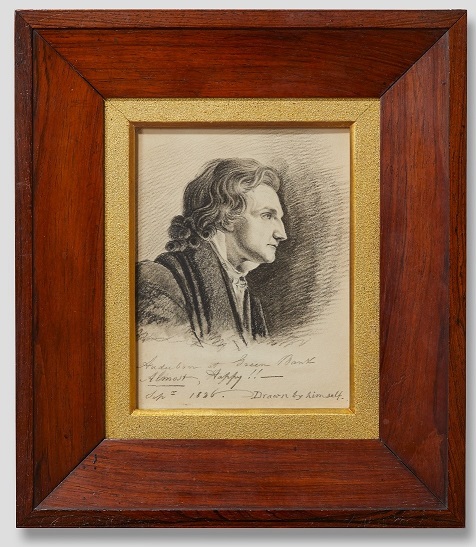
Hannah Rathbone received this self-portrait from Audubon with the inscription: ‘Audubon at Greenbank, Almost Happy!! – Sept. 1826.’ She made the rosewood frame for this picture for his return to Greenbank on September 28th 1826.
A Robin’s Tale
Both Mrs Rathbone & Hannah had a favourite, semi-tame Robin that visited Greenbank House and was thankfully spared the fate of so many other birds that Audubon came across while out hunting. On the 10th September 1826 Audubon recorded the following in his diary:
“The Little Robin that She calls her own and that when shooting she particularly requested I should not kill, was hopping about the room and flying in and out perfectly free from either fear or Danger- I saw there was a gem in painting.”
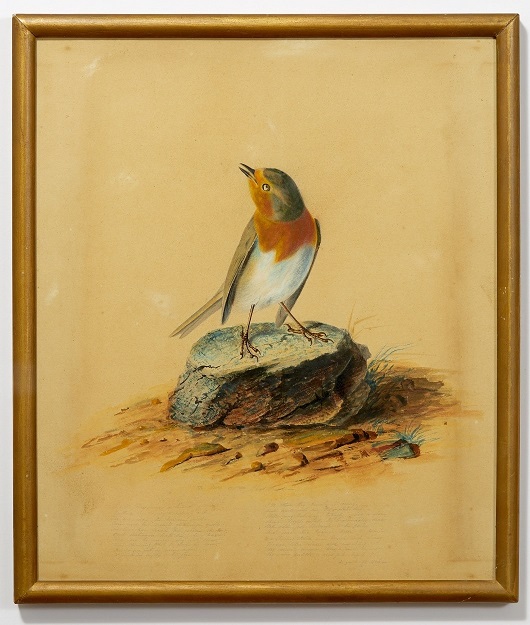
‘A Robin, 1826’ with the poem inscribed by Audubon underneath the painting.
This painting was a gift for Hannah Mary Rathbone and contains a poem written underneath the image in which Audubon describes how he enjoyed spending time in the wild living with nature.
“To Miss Hannah Mary Rathbone
There is a joy, that oft my heart has known,
The secret haunts of nature to explore,
To hold communion with myself alone,
In wilds, which man has never trod before.
And well I love, at solitary night,
To hear the wailing heron’s plaintive cry,
My only lamp, the firefly’s glowing light;
My only canopy, the fretted sky
And in the mighty forest of the wild
Oft have I lov’d, beneath a hoary tree,
Protected by its gloomy shade, to rest
For nature’s sterner charms have joy for me
what different scenes have England’s shores displayed
Here nature wandering hard no more I find
In similar moods and trackless wilds betrayed,
Till here I meet her beauties in thy mind.
Now greater joy my soul desires to know.
When offering up this effort of my art,
To thee, to whom such grateful thanks I owe,
I strive to paint the feelings of my heart.”
A Robin’s Tail
It does appear later that another Robin in the surrounding area however was shot and wired into position as Richard Rathbone Junior detailed many years after Audubon’s visit that he saw him ‘pin it with long pins into a long board to fix it into position.’
This second robin painting appears more realistic with its tail up and beak closed and may be the robin that was described by Rathbone.
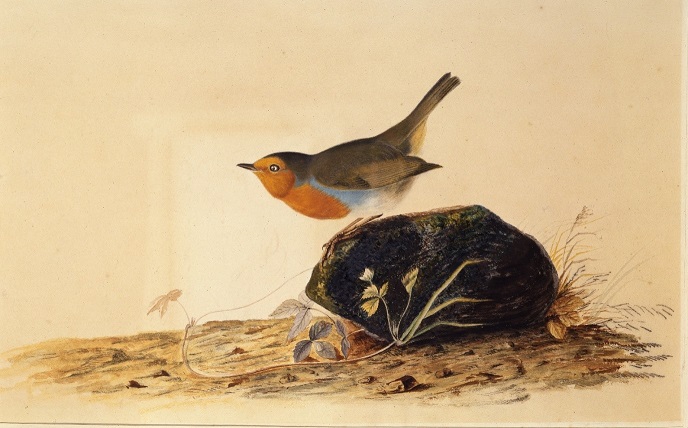
‘Robin Perched on a Mossy Stone, 1826’
On the reverse of this painting Audubon inscribed the following:
“It was my greatest wish to have affixed on the face of this drawing my real thoughts of the amiable lady for whom I made it in Poetry Divine – but an injunction from Hannah Rathbone against that wish of my heart has put an end to it – and now I am forced to think only of her benevolence! Of her filial love! Of her genial affections – her most kind attentions and friendly civilities to all who come to repose under this hospitable roof – to the stranger who must now bid farewell who will pray for her – her Mother and her Friends, and who will be forever her most devoted and obedient Humble Servant, John. J. Audubon.”
This suggests that although there was affection between Hannah and Audubon, she also had her limit and set boundaries that he had to adhere to.
Gifts of Gratitute
'I feel a desire of presenting you with this amiable otter, because I feel a wish of proving my gratitude to you.' John James Audubon
Not all of Audubon’s gifts to the Rathbone Family had such a sweet subject. The painting ‘An Otter Caught in a Trap’ was started on 17th August 1826 and finished on the 21st August. Audubon painted it for Mrs William Rathbone as a parting gift for her hospitality, detailing in his diary that it was admired and viewed by many.
Although Audubon described it as an ‘amiable otter’ it is a very different subject matter than his previous gifts to Hannah.
Mrs Rathbone graciously accepted the painting in the spirit of goodwill that he intended, however the painting became something of a family joke. Her son wrote: 'It hung on our wall for years until my mother could no longer bear the horror of it.'
The family also received other artworks from Audubon during his visit which are now on display in gallery 8.
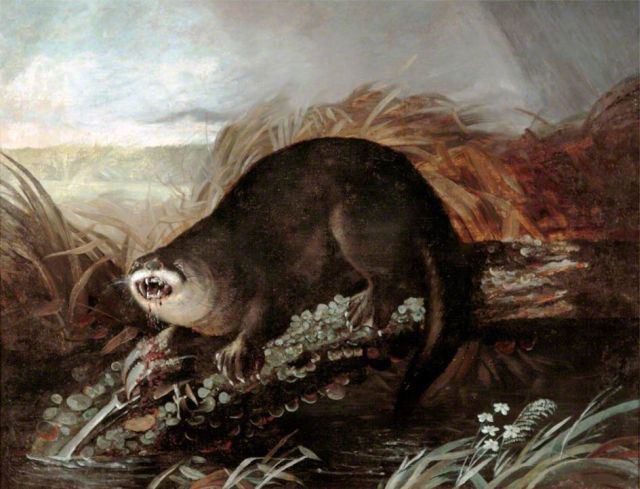
‘An Otter Caught in a Trap, 1826’
Leaving Liverpool
Audubon left Liverpool in 1829 and did return to his wife Lucy, although their relationship had declined over the three years that he had been away.
When Audubon’s daughter Maria published her father’s journal she edited the text so much that many excerpts were drastically altered or erased entirely, including entries that mention Hannah.
Audubon's original Journal entry for October 19th 1826 read:
“My Hannah was well…I longed for a walk with Hannah. I wished to talk to her alone but the weather altered. It rained and I rambled by myself after a beautiful rose that (later) died on her bosom.”
Maria Audubon’s published version however stated the following and omits all mention of Hannah from the entry:
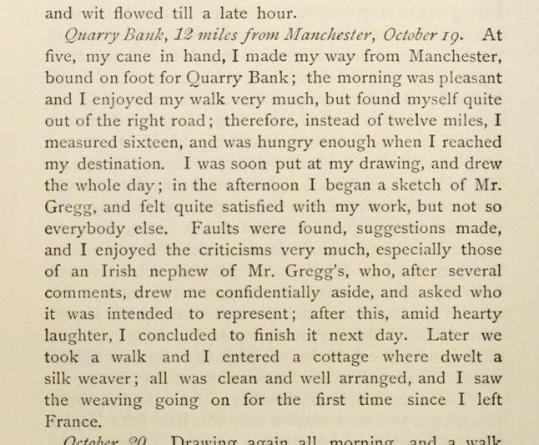
The image above show’s Maria Audubon’s edited version of her father’s diary entry.
Thanks to the many wealthy people that Audubon was introduced to by the Rathbone family, he was able to get enough money together to create his book ‘Birds of America’ which consists of 435 hand coloured prints. The book is now considered one of the most valuable books in the world.
As for Hannah, she eventually married Dr William Reynolds in 1831 and her favourite Robin was immortalized in an Audubon painting and may have been one of the luckiest birds to have crossed his path.
Conservation and Change
Although Audubon shot and mounted the wildlife that he wanted to capture in his paintings, cameras had yet to be invented and wildlife conservation had not been considered at that time.
The National Audubon Society was set up in 1886 and sought to protect bird species then under threat from hunters and mass slaughter. Ironically, although he shot many birds, Audubon had achieved lasting fame for his detailed studies and illustrations of American birds and his name was attached to the society.
More recently, Audubon has come under scrutiny for his buying and selling of enslaved people in the 1820s and the society is considering whether to continue with the name and affiliation with the artist.
The University of Liverpool acknowledges Audubon's ownership and trading of enslaved Africans who worked on his American properties.
Further information
You can find out more about Audubon in our blog from 2021
Keywords: John James Audubon, Robin, National Robin Day, Winter Solstice.